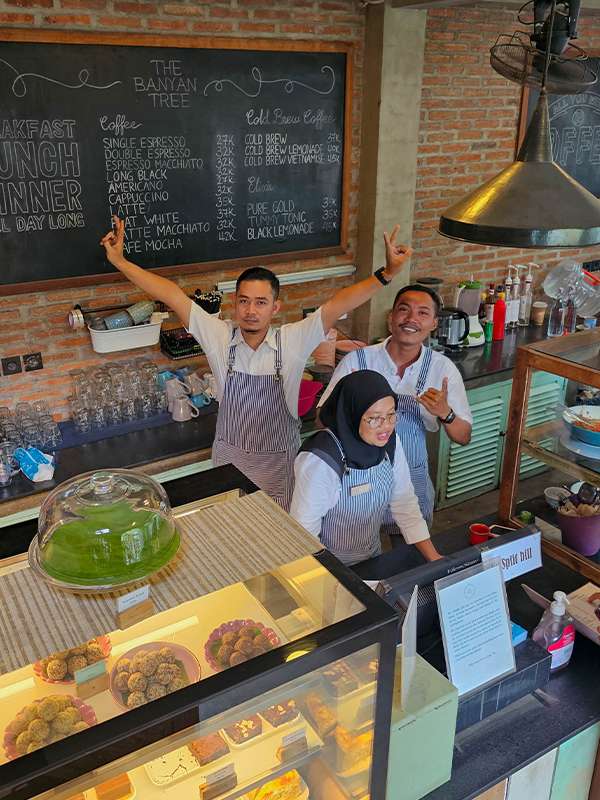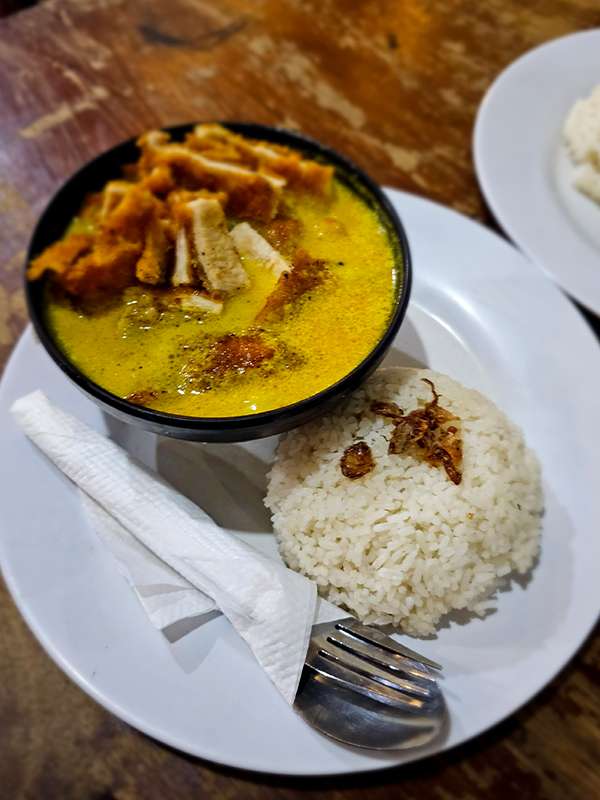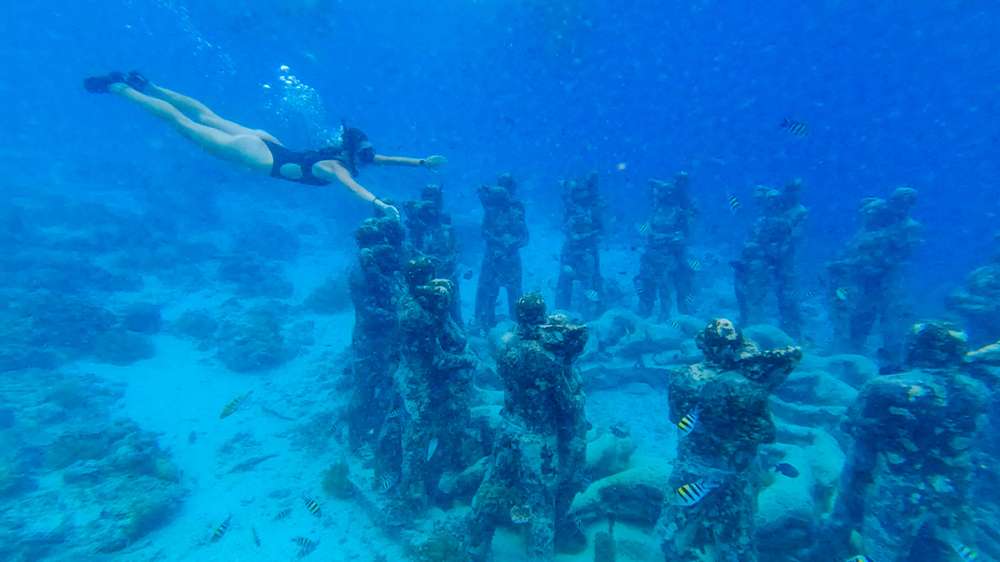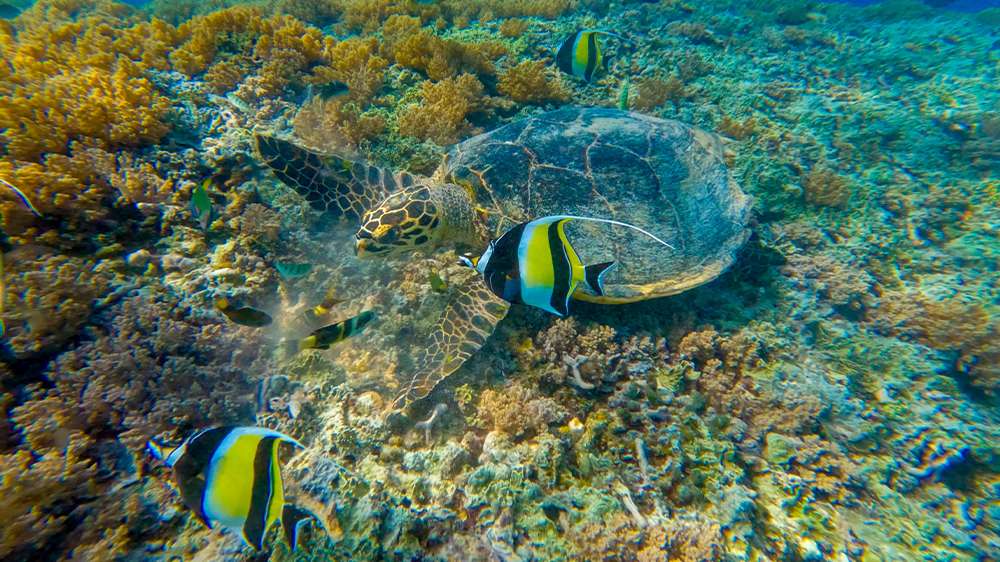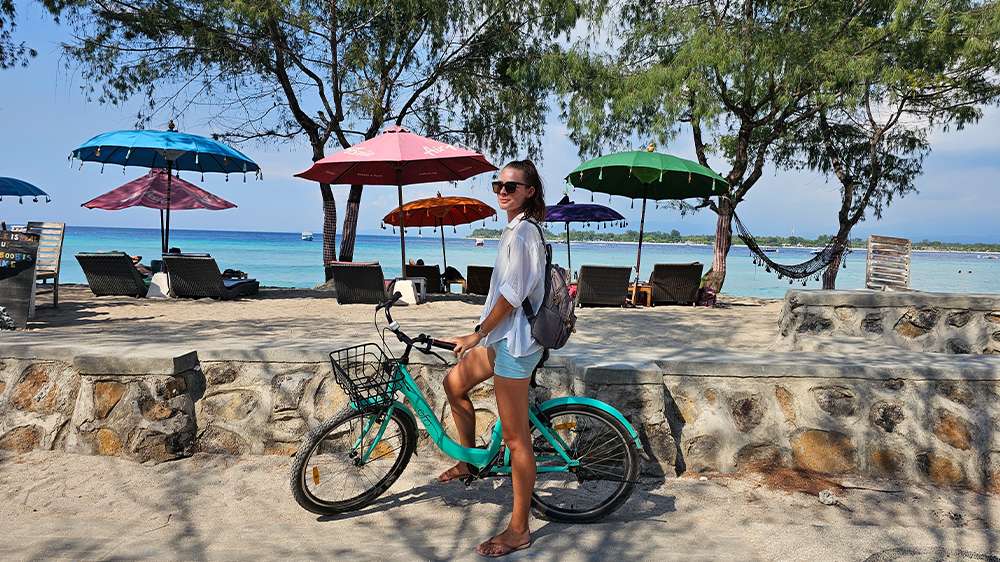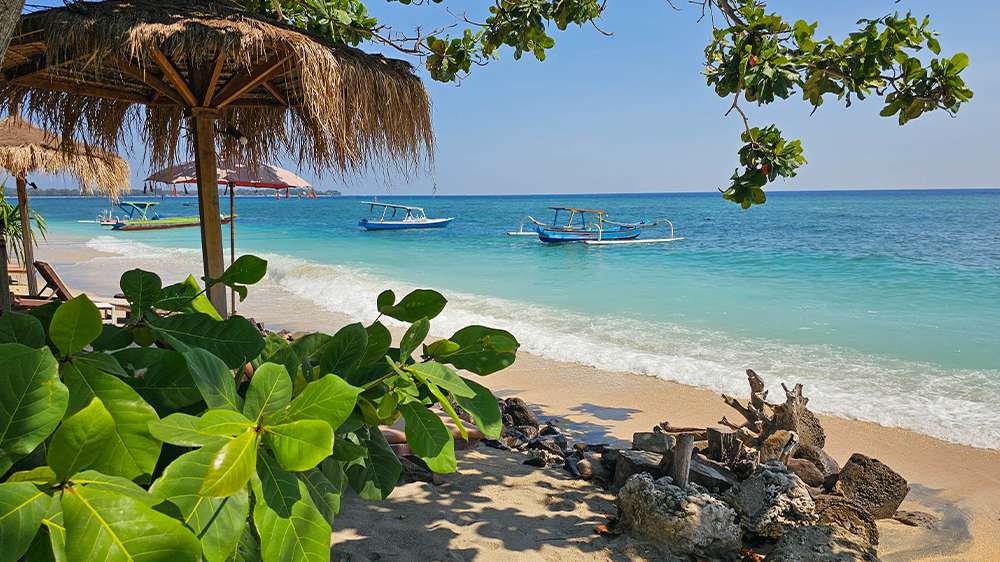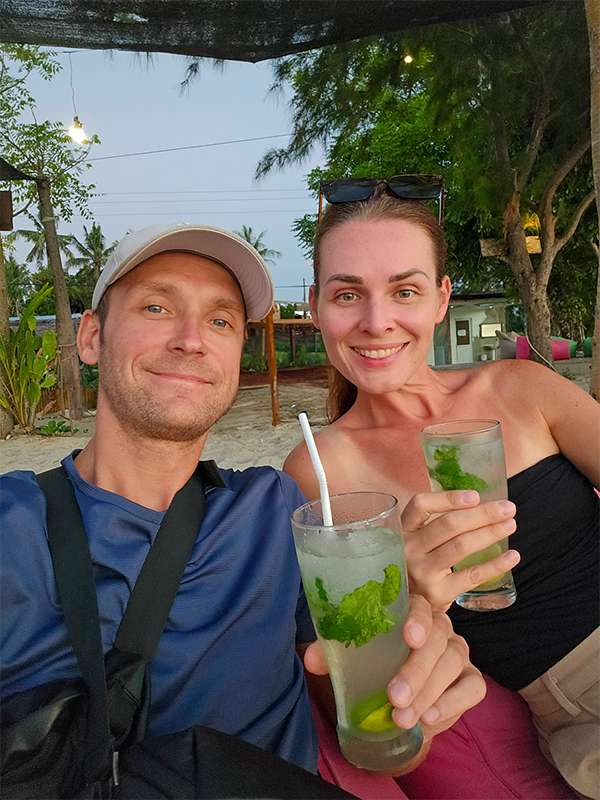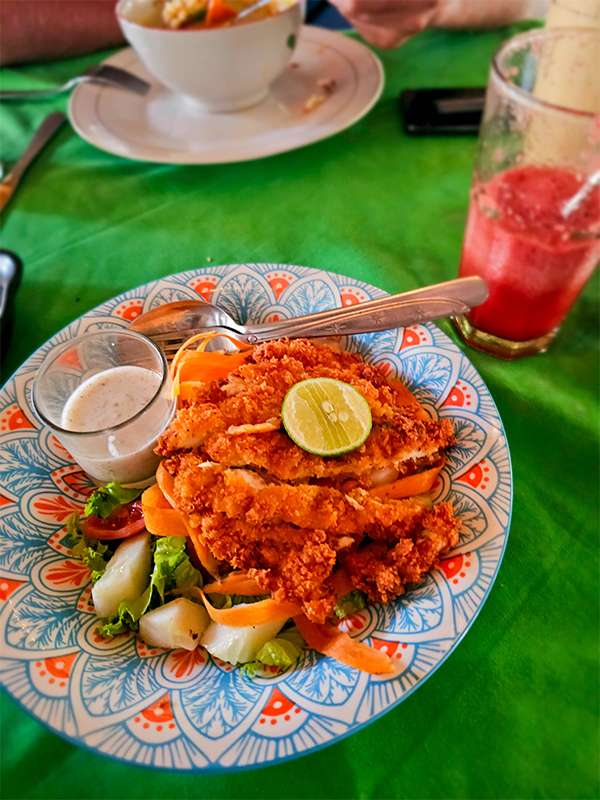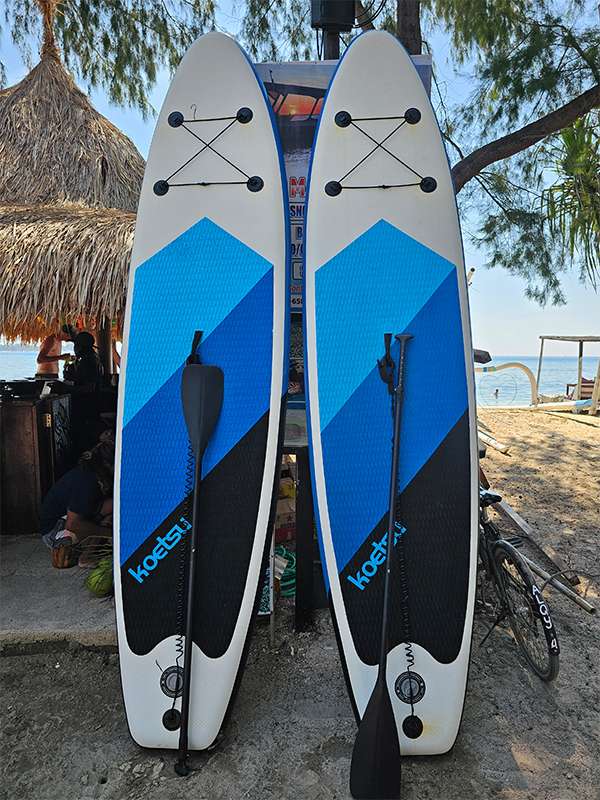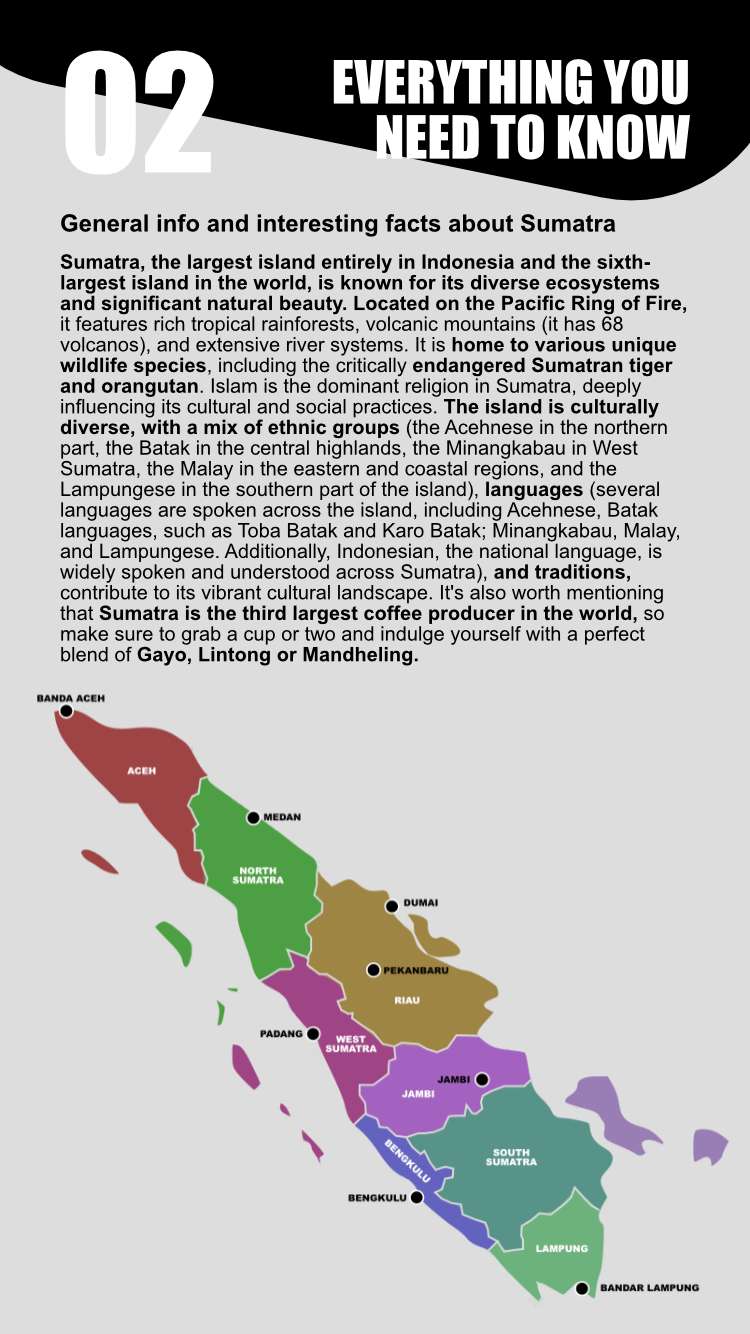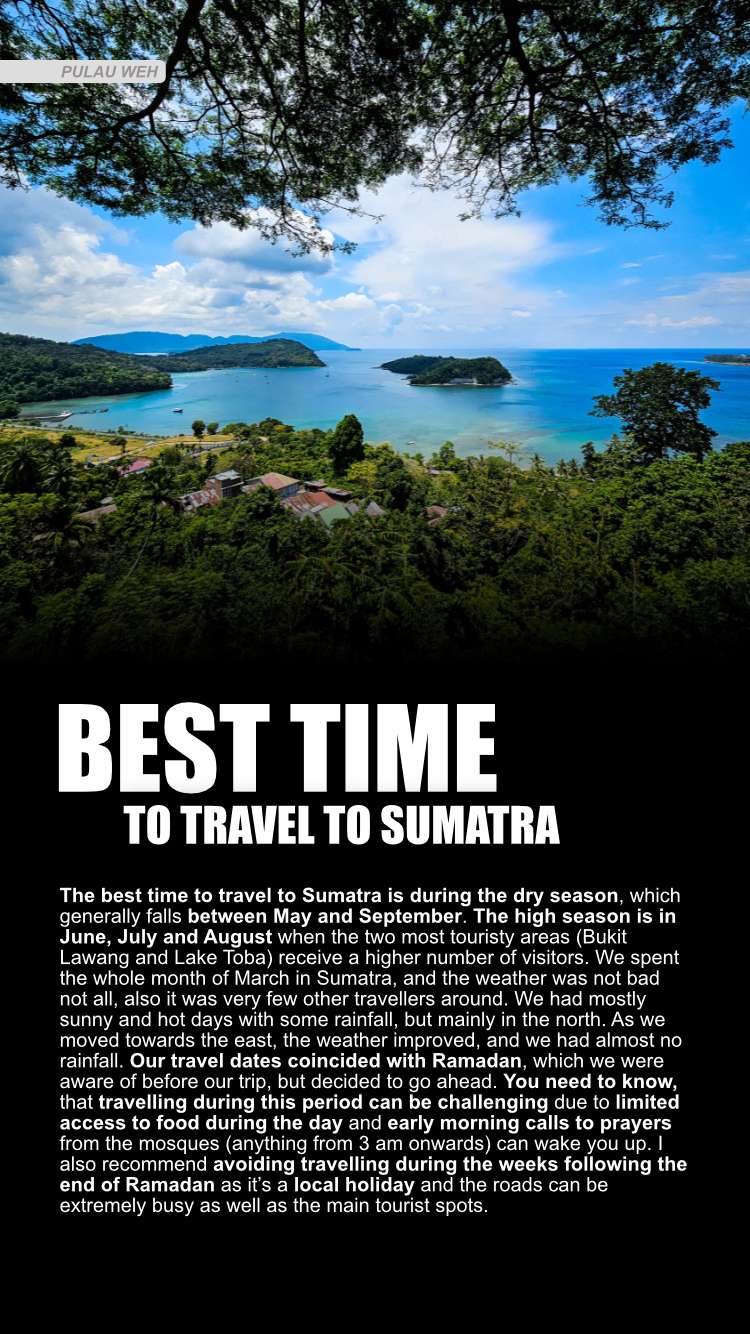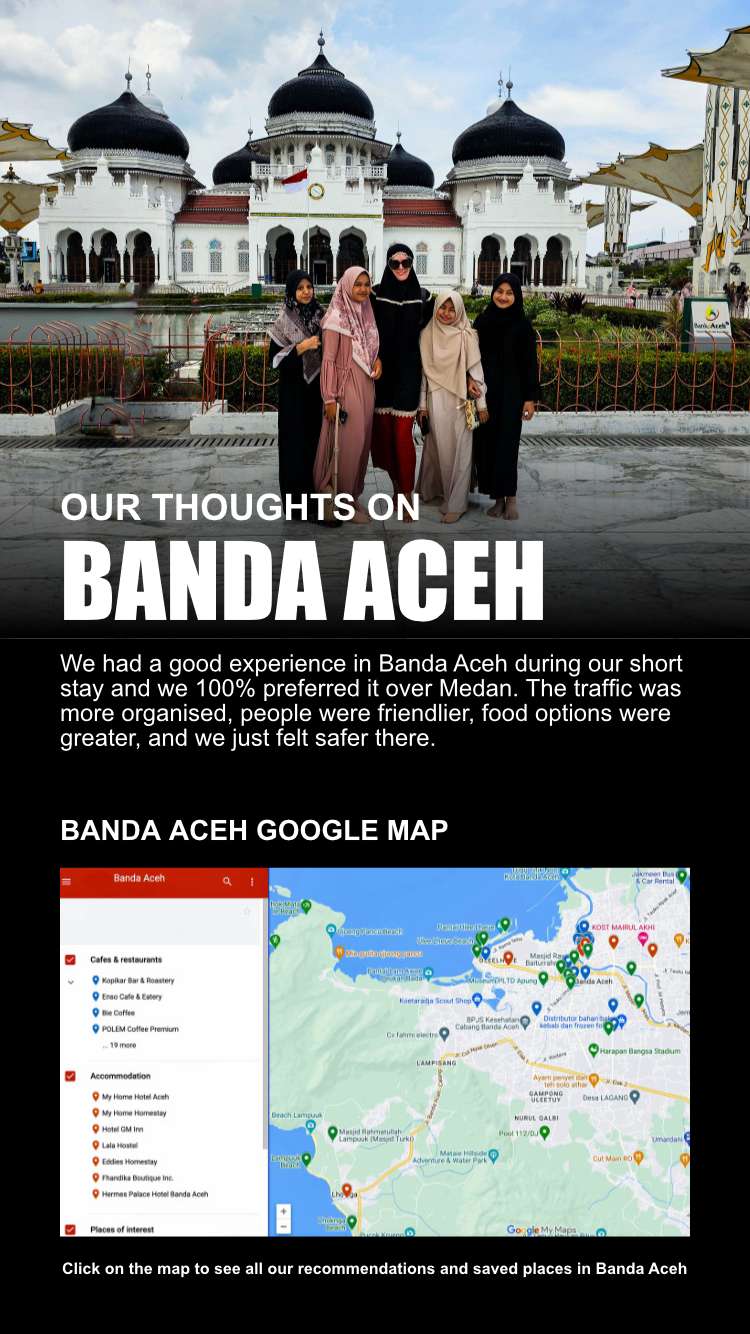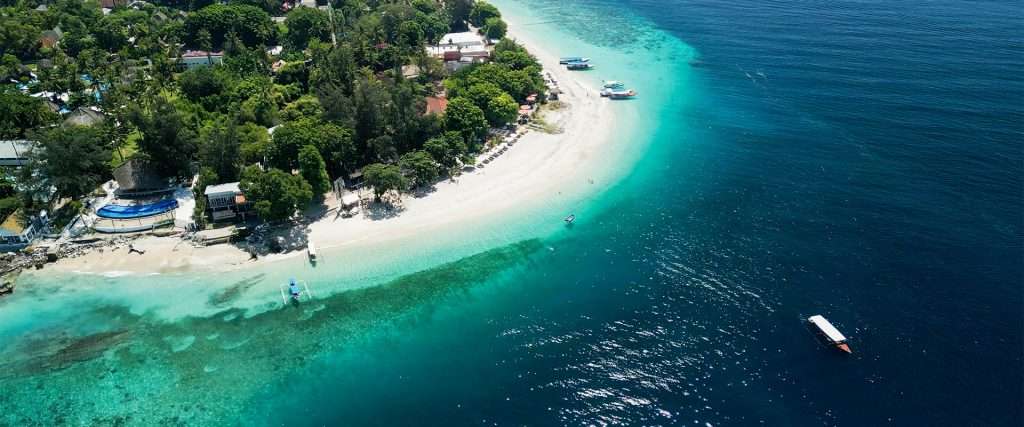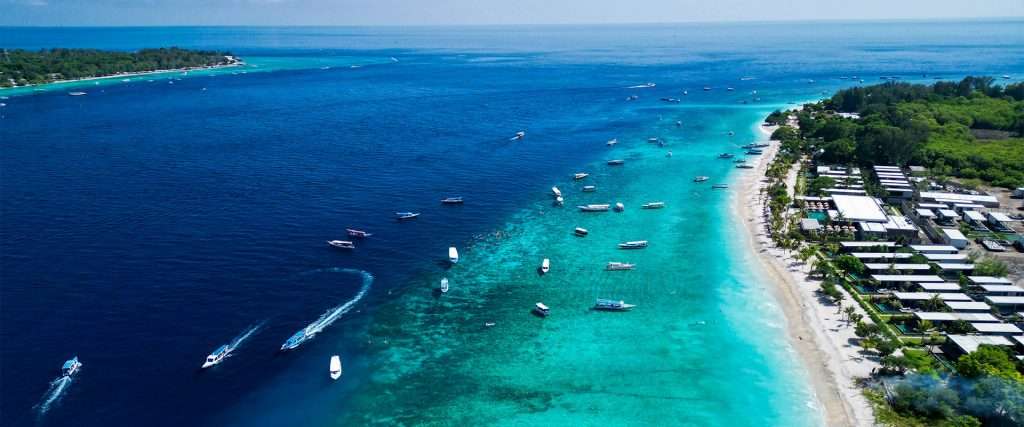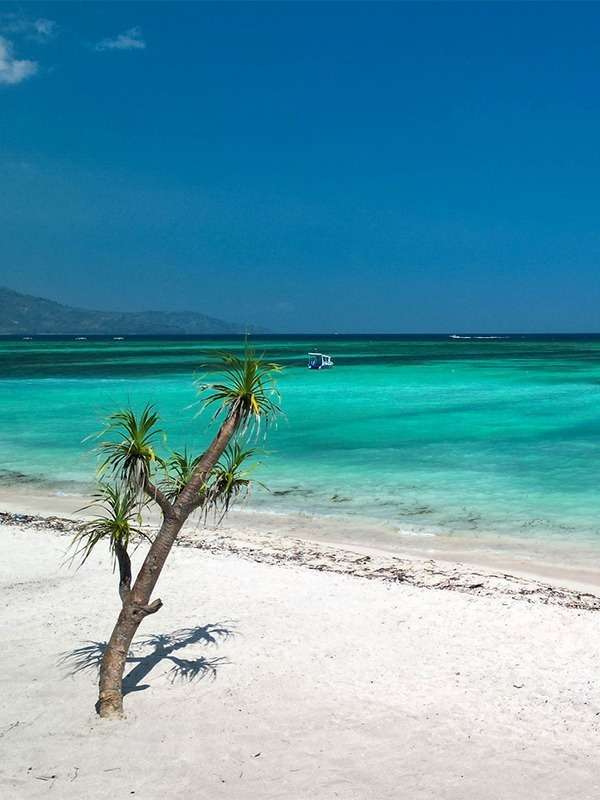This Gili Islands travel guide is your key to the perfect tropical escape. Think white sandy beaches, turquoise waters, and laid-back island vibes. No wonder these three tiny islands — Gili Trawangan, Gili Meno, and Gili Air — are among Indonesia’s most loved destinations.
I’ve visited the Gilis three times, and each trip made me fall in love with them even more. Whether you’re here for world-class snorkeling, vibrant beach bars, or pure relaxation, this guide has you covered. Inside, you’ll find essential tips, the best things to do, how to get around, and more; everything you need to plan your dream trip.
For a structured travel plan, check out our Ultimate 7-Day Gili Islands Itinerary, designed to help you make the most of your time in paradise.
So, what are you waiting for? Let’s explore one of the most beautiful island getaways in Indonesia!
Gili Islands at a Glance: Key Facts and Travel Insights
Geography and Location of the Gili Islands
The Gili Islands are a trio of small, car-free islands off the northwest coast of Lombok, Indonesia. Although often associated with Bali, they officially belong to Lombok and are easily accessible from both islands.
They are known for their pristine beaches, clear turquoise waters, and vibrant marine life. With no motorised vehicles, the only way to get around is by bicycle, horse-drawn carts (cidomos), or on foot, adding to the islands’ peaceful charm.
Did you know?
The Gili Islands are car-free! Locals and visitors get around on foot, bike, or horse-drawn carts, adding to the islands’ peaceful vibe. Plus, the waters around the islands are home to sea turtles, making it one of the best spots for turtle-watching!
Religion and Language on the Gili Islands
Unlike Bali’s predominantly Hindu culture, the Gili Islands are Muslim, influenced by the Sasak people of Lombok. You’ll hear the call to prayer from mosques, especially in the mornings and evenings. While the islands are very tourist-friendly, it’s good to be mindful of local customs. Wearing beachwear is fine on the shore but covering up when walking through villages is appreciated.
The primary language spoken is Bahasa Indonesia, though many locals also speak Sasak (the native language of Lombok). Due to tourism, English is widely understood, especially in restaurants, hotels, and dive shops.
Here are the most essential phrases to know
Hello | Greetings:
Selamat Pagi
Thank You:
Terima Kasih
Excuse me:
Permisi
Culture and Food on the Gili Islands
While the Gilis have embraced tourism, they still hold onto their local charm. Life here moves at a relaxed pace, centred around the beach, diving, and breathtaking sunsets.
Beyond tourism, many locals on Gili Air and Gili Meno continue traditional livelihoods like fishing and farming. Small markets sell fresh produce, and if you get the chance, trying local Sasak cuisine is a great way to experience the islands’ authentic flavours.
Top Activities to Experience in the Gili Islands
The trio of islands offer the perfect blend of adventure, relaxation, and unforgettable experiences. In this Gili Islands Travel Guide, we’ve collected the best things to do, from exploring vibrant coral reefs to unwinding on pristine beaches. If you’re looking for adventure, relaxation, or a mix of both, these must-do activities should be on your Gili Islands itinerary.
Snorkel or Scuba Dive with Sea Turtles
Swim with sea turtles at Turtle Point on Gili Trawangan, Gili Air, or Gili Meno, or dive into vibrant coral reefs and discover diverse marine life. Don’t miss the underwater sculptures off Gili Meno, a unique and fascinating dive spot.
Cycle around the Islands
Rent a bike and ride around Gili T or Gili Air’s peaceful, car-free paths, perfect for stunning views and photos.
Relax on the Beach & Soak in the Sunset Vibes
Unwind on the pristine white sandy beaches of Gili T, Gili Air, or Gili Meno, with crystal-clear waters perfect for a lazy afternoon. As the sun sets, head to a beachfront bar like The Exile on Gili T or Mowie’s on Gili Air, or kick back at a stylish beach club like La Cala or BASK with a cocktail in hand.
Indulge in Local Cuisine
Savour delicious Indonesian dishes at Gili Trawangan’s Night Market or join a cooking class on Gili Air.
Try Stand-Up Paddleboarding or Kayaking
Explore the turquoise waters on a paddleboard or kayak. Rentals are available around the islands for a fun and relaxing way to enjoy the sea.
Unwind with a Balinese Massage
Switch off and recharge with a relaxing Balinese massage on Gili T or Gili Air. It’s the perfect way to soothe your muscles after a day of diving, snorkelling, or cycling around the islands.

Gili Islands Travel Guide: Essential Travel Tips & Must-Know Information
Planning a trip to the Gili Islands is easy with a few helpful tips in mind. From lounging on beautiful beaches to exploring the underwater world, this Gili Islands Travel Blog covers all the essentials to make your time on the islands more enjoyable and stress-free.
Transportation on the Gili Islands
How to Get to the Gili Islands
From Bali
The easiest way to reach the Gili Islands from Bali is by fast boat. Several operators run routes from Padang Bai, Serangan, Sanur, and Amed, with travel times ranging from 1.5 to 3 hours, depending on where you depart. If you’re heading to Gili Trawangan, make sure to book your Bali to Gili Trawangan boat in advance, especially during peak season.
We booked the Ganggari Fast Boat from Padang Bai to Gili Trawangan through 12Go Asia for IDR 200K per person. Prices may vary depending on when and where you buy your ticket, so it’s a good idea to have a price range in mind. You can negotiate prices at the harbour. For us, the journey was smooth and took just under 2 hours.
From Lombok
Fly into Lombok International Airport and take a taxi to Bangsal Harbor (about 1.5–2 hours). From there, take a public boat (IDR 23K) or a fast boat (IDR 85K) to the Gili Islands, with the boat ride lasting just 15–20 minutes.
Getting around the Gili Islands
- Walking: The Gili Islands are small enough to explore on foot in under two hours, making it a great way to enjoy the tropical vibe at your own pace. Remember to wear sunscreen and a hat, and stay hydrated, as the sun can be strong. Stop at beach bars to cool off and enjoy the views
- Cycling: Biking is a popular and quick way to explore the islands. Rentals start at IDR 50k per day, making it a budget-friendly option. Some areas have soft sand, so be ready to push your bike occasionally, but it’s a fun way to get around and squeeze in some exercise
- Horse carts (cidomos): Cidomos (horse-drawn carts) are available, but their use is controversial due to animal welfare concerns. If you choose this option, check the condition of the horse and keep your luggage light. A fixed fare of IDR 150k applies per ride, regardless of distance
Getting between the Gili Islands
The Gili Islands are well connected, making it easy to hop between them:
- Public Boat (Slow Boat): A budget-friendly option at IDR 40–45,000. It departs Gili Trawangan at 9:30 AM, stops at Gili Meno and Gili Air, and returns to Gili T around 4:00 PM
- Fast Boat: A quicker option at IDR 85k per person. Fast boats run every hour throughout the day, offering a quicker transfer between the islands
Best Time to Visit the Gili Islands
The best time to visit the Gili Islands is from April to October, during the dry season. Expect plenty of sunshine, clear waters, and perfect conditions for snorkelling, diving, and beach activities. We visited in May, and the weather was ideal – no rain, just clear skies and calm seas.
The wet season, from November to March, brings occasional rain and fewer crowds, making it a great time for a quieter trip at lower prices. If you prefer fewer tourists and still pleasant weather, April, May, and September are your best bet. July and August are the peak season, so it’s a good idea to book your accommodation ahead of time.
Visa Requirements for the Gili Islands
Before heading to the Gili Islands, it’s important to check the visa requirements based on your nationality. The two main visa options for tourists are:
- Visa on Arrival (VoA): Available to citizens of many countries, this visa costs IDR 500k and is valid for 30 days, with the option to extend for an additional 30 days
- e-Visa (e-VoA): Apply online ahead of your trip. The e-VoA offers the same validity and cost as the standard VoA but allows you to bypass the airport queues
For more details and to apply for the e-Visa, visit the Official e-Visa Website.
Visa Extension
If you need to extend your visa, it’s best to start the process at least 7 days before it expires. If you wish to extend your stay beyond 30 days, you’ll need to either visit an immigration office in Bali or Lombok or complete the process online (if you’ve applied for an e-VoA). Here’s how it works:
- Submit your documents and payment
- Get your photo and fingerprints taken
- Return to collect your passport with the extended visa
If you’re using the e-VoA, the extension process is quicker and can be done online in just one day. However, if you entered with a Visa on Arrival, you’ll need to travel back to Bali or Lombok to apply for the extension. For in-person applications, allow at least 5–7 days for processing.
Since the Gili Islands don’t have immigration offices, make sure to plan your visa extension accordingly.
Staying Connected on the Gilis
e-SIM (Convenient and Hassle-Free)
- Get connected instantly, no need for physical SIM card
- Recommended option: Airalo – Use code JUDIT4949 for US$3 off on your first data pack
Tourist SIM Cards (Best for Data Plans)
- Purchase from official outlets like Telkomsel or Grapari (avoid buying at the airport)
- A passport is required for registration
- Starting at IDR 200k for a 20GB plan (valid for 30 days)
- Easily manage your SIM using the My Telkomsel app
- Note: IMEI registration expires after 30 days, but you can re-register twice per device
Good to know
There’s a one-time entrance fee of IDR 20k for the Gili Islands, known as a conservation fee, which you’ll need to pay on arrival. Keep your receipt as it covers all three islands (Gili Trawangan, Gili Meno, and Gili Air), so you won’t need to pay again when island hopping!
Money and ATMs
The local currency in the Gili Islands is the Indonesian Rupiah (IDR). While credit and debit cards are increasingly accepted, especially at hotels and larger restaurants, many smaller shops, local warungs, and activities will still require cash.
ATMs are available on Gili Trawangan and Gili Air, but they can be unreliable at times; sometimes running out of cash or imposing withdrawal limits. Gili Meno, on the other hand, has very limited ATM access, so it’s best to plan accordingly.
Card vs. Cash
While cards are widely accepted in tourist spots, it’s always wise to carry a mix of cash and a card. Make sure to withdraw cash before heading to the Gili Islands to avoid any potential issues with ATMs.
Pro Tip: Bring both cash and a card for flexibility, and consider withdrawing money before arriving, especially if you’re headed to Gili Meno or Gili Air. For better exchange rates, using a travel card like Revolut or Monzo can save you money on fees and provide more convenient access to cash.
Sign up for Monzo today and get a £5 bonus after your first payment.
Budgeting and Costs
The Gili Islands offer options for all types of travellers, from budget backpackers to those seeking luxury. While costs are slightly higher than in Lombok, they’re still more affordable compared to some parts of Bali, especially when it comes to food and accommodation.
During our time on the islands, we set a daily budget of $50 (IDR 750k) per person to cover accommodation, food, and activities, and we stayed well within that unless we booked diving trips.
Budget Breakdown
• Accommodation: $15 – $50 per night (from budget guesthouses to beachfront bungalows)
• Food: $5 – $15 per day (local warungs vs. Western-style cafes)
• Transport: $3 (IDR 50k per day for bicycle rental)
• Activities: $10 – $50 per day (snorkelling, island hopping, diving)
Total Daily Cost: $30 – $115
Drone Regulations on the Gilis
While drones are generally allowed on the Gili Islands, it’s important to follow the basic regulations to ensure a smooth experience:
- Altitude: Keep your drone below 150 meters (500 feet), unless you have special permission
- Restrictions: Avoid flying over mosques, crowded areas, and sensitive locations
- Permits: You don’t need a permit for recreational drone use, but if you’re planning professional filming or commercial work, a permit is required
The rules are relatively relaxed on the islands, but it’s always a good idea to stay mindful of the local regulations and respect the surroundings.
Health and Safety Tips
The Gili Islands are generally safe, but it’s always good to stay cautious. Keep these tips in mind to ensure a healthy and enjoyable trip:
- Stay Hydrated: The tropical heat can be intense, so drink plenty of water and apply sunscreen regularly to protect your skin
- Mosquito Protection: Use mosquito repellent (Soffell is a popular choice) to avoid bites and reduce the risk of dengue fever
- Water Safety: Be mindful of strong currents when swimming or snorkelling. Always check local conditions before heading out to ensure a safe experience
- Water: Stick to bottled or filtered water; avoid tap water
- Dress Modestly: The islands follow Muslim customs, so dress modestly when away from the beach, especially near mosques or during prayer times
- Security: While the islands are generally safe, petty theft can occur, especially in busy areas. Keep your belongings secure
- Health Kit: Carry a small first aid kit and any necessary medications
- Stay Alert: Stay updated with the latest travel advisories and follow local safety advice to ensure a worry-free trip
Travel Insurance for the Gili Islands
Before heading to the Gili Islands or anywhere in Indonesia, make sure you have comprehensive travel insurance for peace of mind. We highly recommend SafetyWing Nomad Insurance, especially for digital nomads and long-term travellers. It covers:
- Medical emergencies & hospital stays
- Trip delays & lost baggage
- Adventure activities (like snorkelling & diving)
- Natural disasters & emergency evacuation
At just $56.28, the policy automatically renews every
28 days until you choose an end date or cancel. You can easily manage everything on the go through the website and app.
Sign up here and get covered today with SafetyWing for a worry-free adventure!
Get Inspired
Snorkeling with sea turtles in the Gili Islands is pure magic. Both Gili Trawangan (Gili T) and Gili Air offer crystal-clear waters, vibrant coral reefs, and the chance to swim alongside two amazing turtle species: Green Sea Turtles and Hawksbill Turtles. We snorkeled with them almost every day, it was such an incredible experience: calm, beautiful, and unforgettable. The Gili Islands are part of a protected marine area, with local efforts like Gili Eco Trust helping preserve this underwater paradise.
If you’re dreaming of snorkeling with turtles in Gili Trawangan or Gili Air, don’t miss this bucket list adventure. It’s easily one of the best things to do in the Gili Islands!

